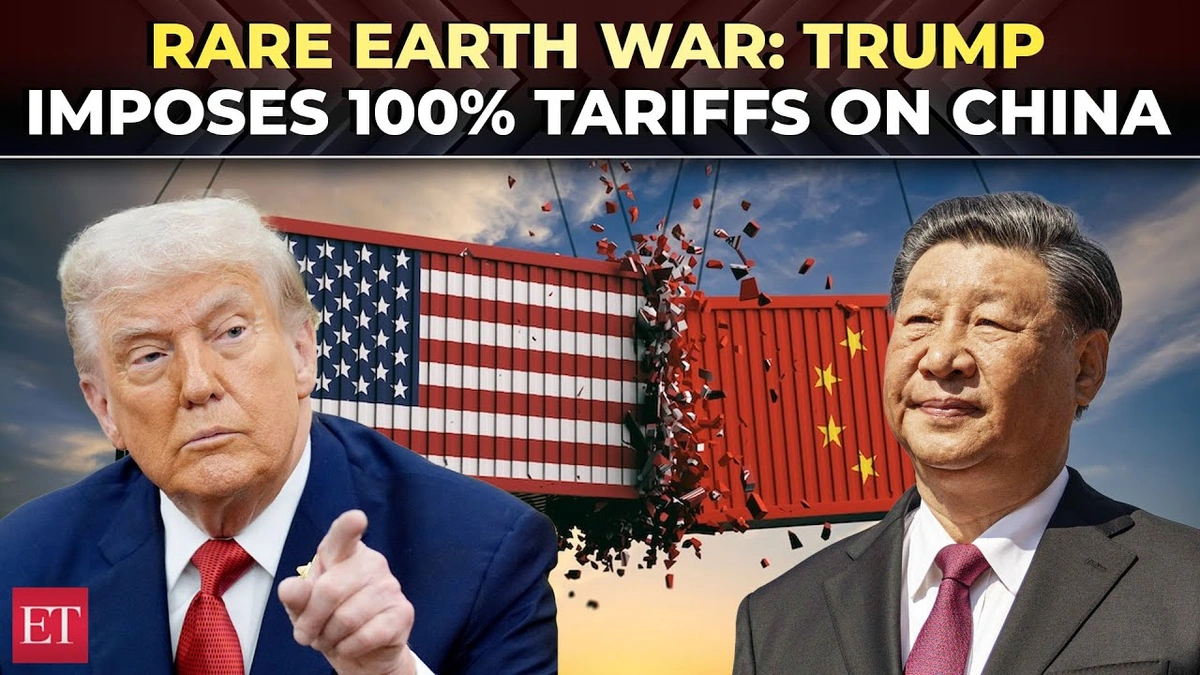So, news just broke: Trump is reportedly mulling over a “massive increase” in tariffs on China. Now, before you groan and think, “Not another trade war update,” let’s be honest – this isn’t just about numbers and trade deficits. This has real implications for you, me, and pretty much everyone buying anything, anywhere. Let’s dive into the ‘why’ behind this potential move, what it could mean for India, and what the heck is actually going on. Forget the boring headlines; we’re going deep.
Why Now? The Politics and the Pressure

Here’s the thing: this isn’t happening in a vacuum. We need to understand the political climate. Elections are looming in the US, and tough-on-China rhetoric tends to play well with certain voting blocs. But it’s more than just electioneering. There’s genuine frustration in the US (and elsewhere) about China’s trade practices, intellectual property theft, and market access barriers. According to a report by the United States Trade Representative (ustr.gov ), these issues have been long-standing points of contention.
But, and this is a big ‘but’, slapping tariffs on everything isn’t always the smartest move. It’s a blunt instrument, and it often hurts consumers and businesses in both countries. So, why is Trump even considering this? Well, consider the ongoing economic slowdown globally and the finger-pointing that inevitably follows. Increasing tariffs could be seen as a way to flex economic muscle and pressure China into making concessions. It’s a high-stakes game of chicken, and we’re all watching from the sidelines.
The Ripple Effect: How Trump Tariffs China Impacts India
Okay, so what does this have to do with India? Plenty. A trade war between the US and China creates both challenges and opportunities for the Indian economy. On the one hand, increased tariffs could disrupt global supply chains, potentially hurting Indian businesses that rely on imported components from China. Think electronics, pharmaceuticals, and a whole host of other industries. But , there’s also a silver lining.
If US-China trade relations deteriorate, Indian companies could step in to fill the void. Sectors like textiles, engineering goods, and even technology services could see a surge in demand as companies look for alternative suppliers. The key here is for Indian businesses to be agile and adapt quickly to the changing global landscape. The government also has a role to play in creating a business-friendly environment that encourages investment and innovation.
Navigating the Uncertainty | A Guide for Indian Businesses
So, you’re an Indian business owner. What should you do? First, don’t panic. The situation is fluid, and things could change quickly. However, it’s crucial to be prepared. Here’s a quick checklist:
- Diversify your supply chain: Don’t rely too heavily on any one supplier, especially if they’re located in China. Explore alternative sources in India and other countries.
- Assess your risk: Understand how increased China tariffs could impact your bottom line. Run different scenarios and develop contingency plans.
- Stay informed: Keep up-to-date with the latest developments in the US-China trade relationship. Follow reputable news sources and consult with industry experts.
- Explore new markets: If your existing markets are affected by the trade war, consider expanding into new regions. Africa, Southeast Asia, and Latin America offer promising growth opportunities.
A common mistake I see people make is to stick their head in the sand and hope it all blows over. That’s not a strategy. Proactive planning is the name of the game.
The Long Game: Beyond Immediate Impacts of Increased Trump Tariffs
Let me rephrase that for clarity… the long-term implications are huge! Beyond the immediate impact on trade flows, this situation could accelerate broader trends. We might see a further decoupling of the US and Chinese economies, with companies increasingly looking to diversify their production and sourcing. This could lead to a more multipolar world, with India playing a more prominent role on the global stage. But , it also requires India to step up its game. We need to invest in infrastructure, improve our regulatory environment, and foster a culture of innovation. It’s a marathon, not a sprint.
What fascinates me is how this forces countries to re-evaluate their relationships and dependencies. No one wants to be caught in the crossfire of a trade war. This could spur greater regional cooperation and integration, as countries seek to build stronger alliances and reduce their reliance on any one superpower.
FAQ | Your Questions Answered
Frequently Asked Questions
Will these tariffs actually happen?
It’s hard to say for sure. Trump has a history of using tariffs as a negotiating tactic, so this could be a bluff. However, given the current political climate, it’s certainly a possibility.
How will these tariffs affect the price of goods in India?
It depends on the specific products and where they’re sourced. If Indian companies rely on imported components from China, the price of those goods could increase. However, if Indian companies are able to source domestically or from other countries, the impact may be less severe.
What can the Indian government do to mitigate the negative impacts of the trade war?
The government can take several steps, including reducing import duties, providing subsidies to affected industries, and negotiating trade agreements with other countries.
Are there any industries in India that could benefit from these tariffs?
Yes, sectors like textiles, engineering goods, and technology services could see a surge in demand as companies look for alternative suppliers to China.
What is China’s response to this announcement?
While China has yet to officially respond to the potential tariff increase, it is likely that China will retaliate if the tariffs are implemented.
So, to conclude – this potential increase in China trade tariffs is more than just a headline; it’s a signal of a shifting global landscape. India needs to be prepared, agile, and strategic to navigate the challenges and seize the opportunities that lie ahead. It’s a complex situation, but one that demands our attention and proactive planning.




